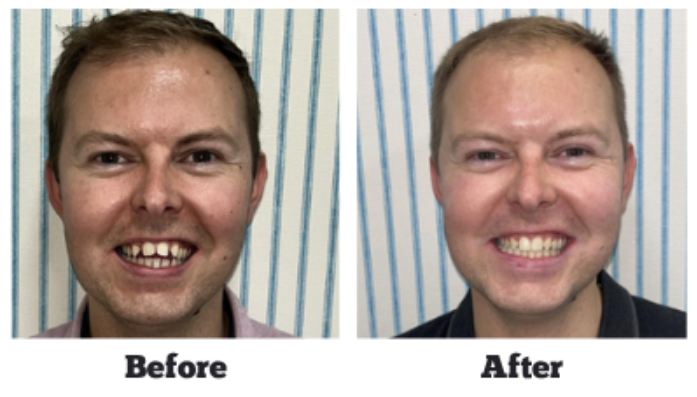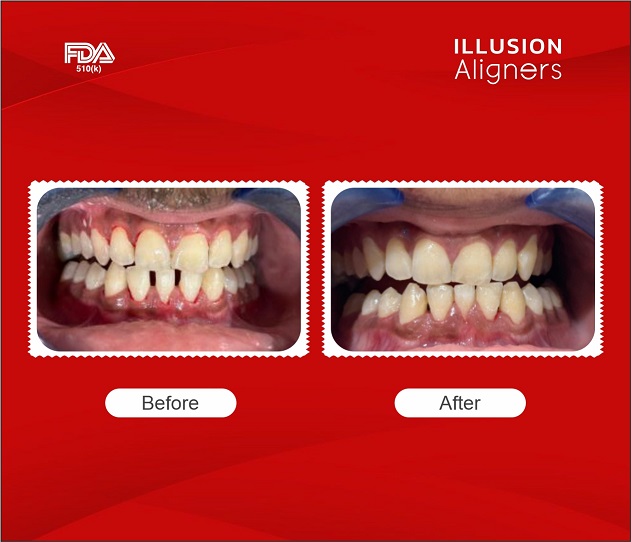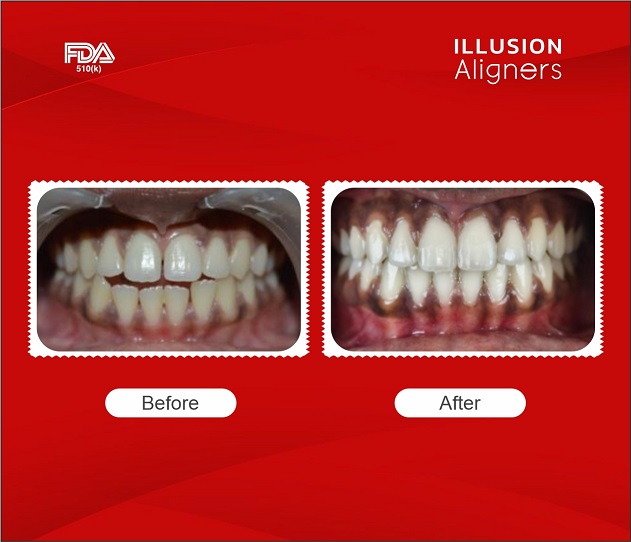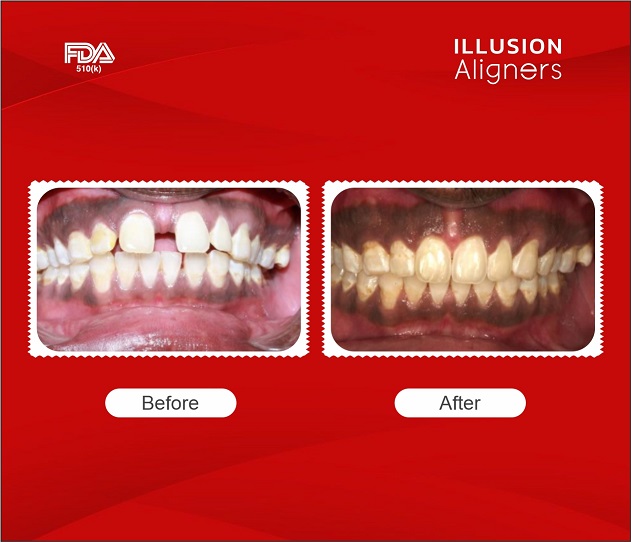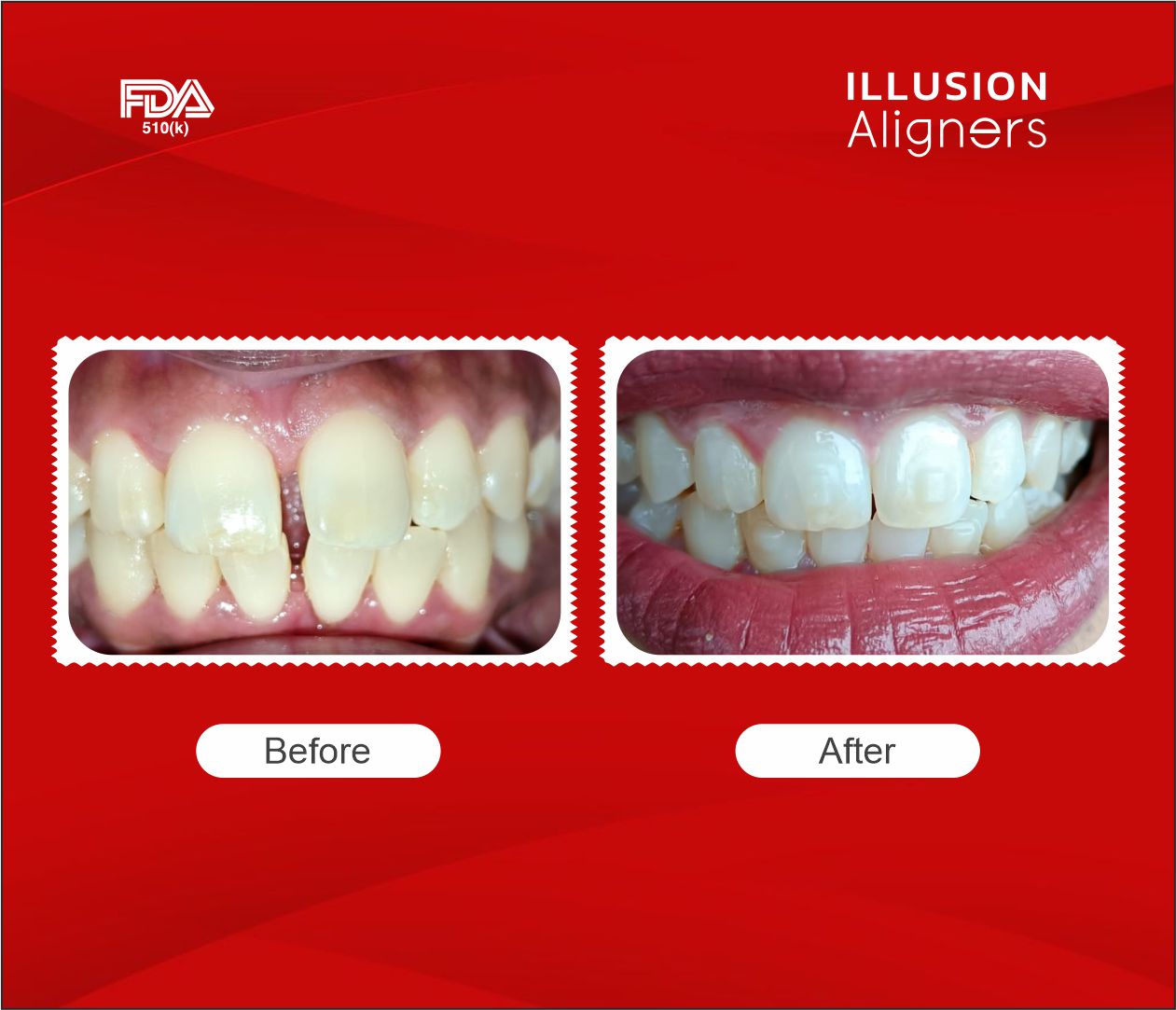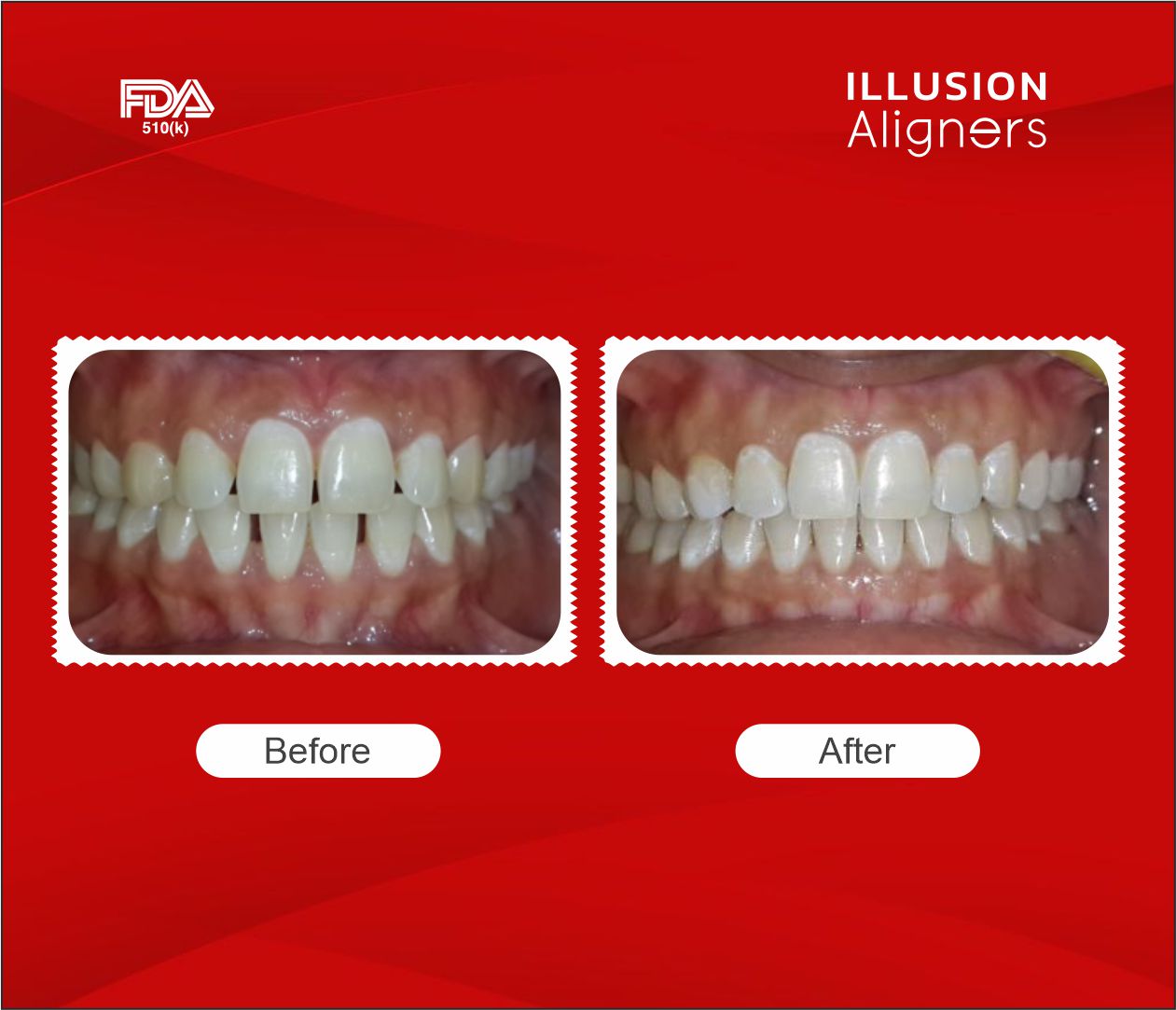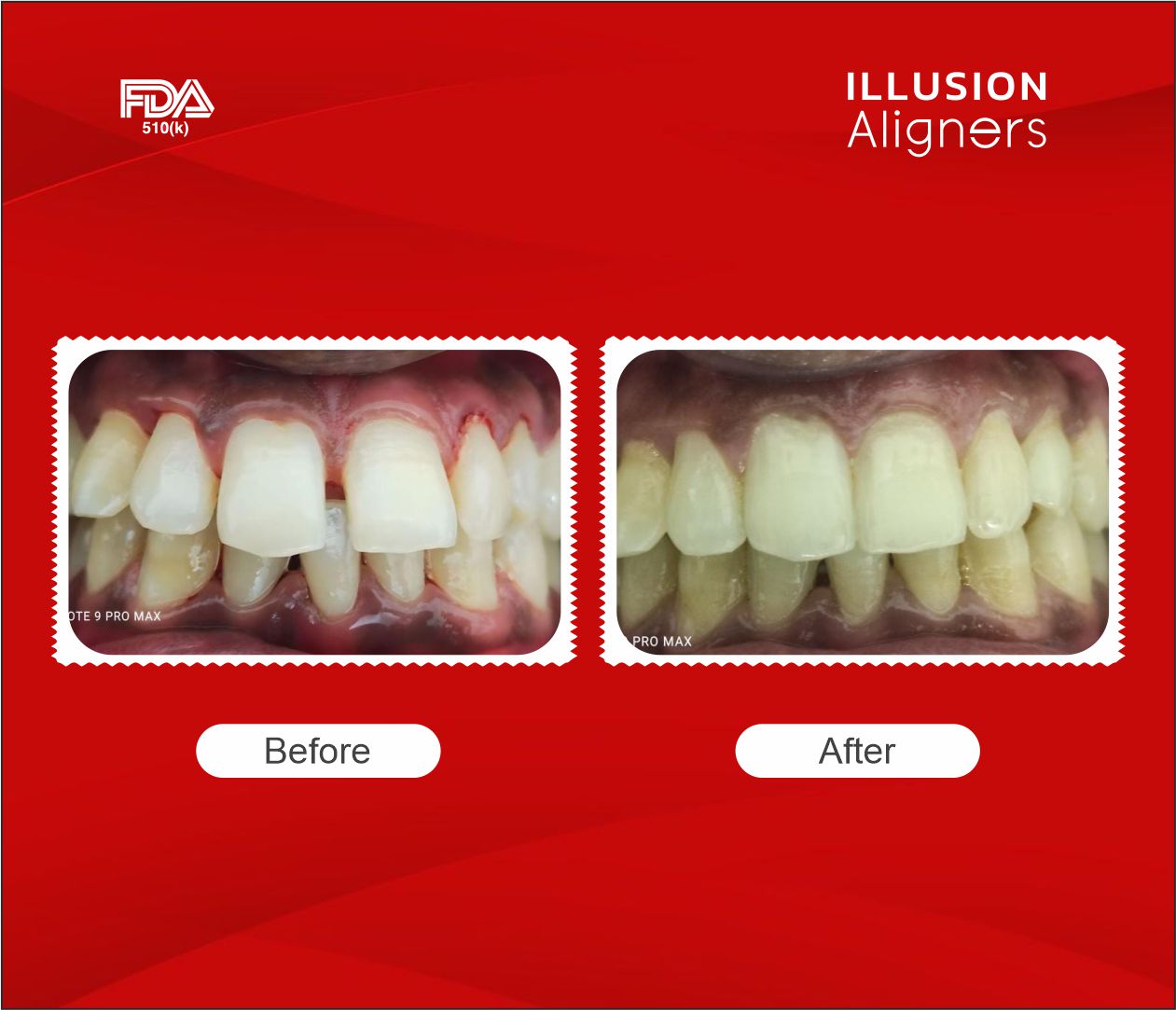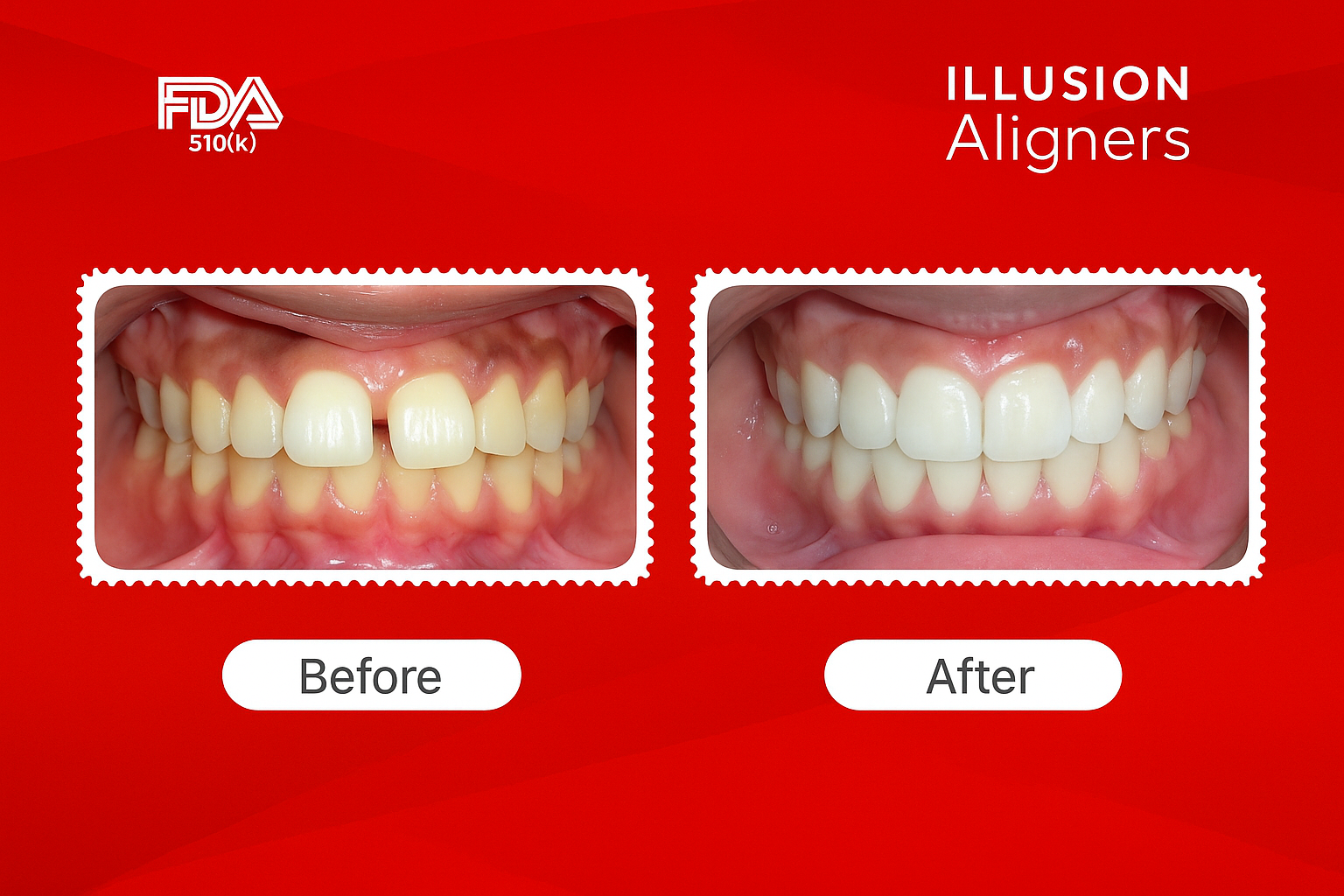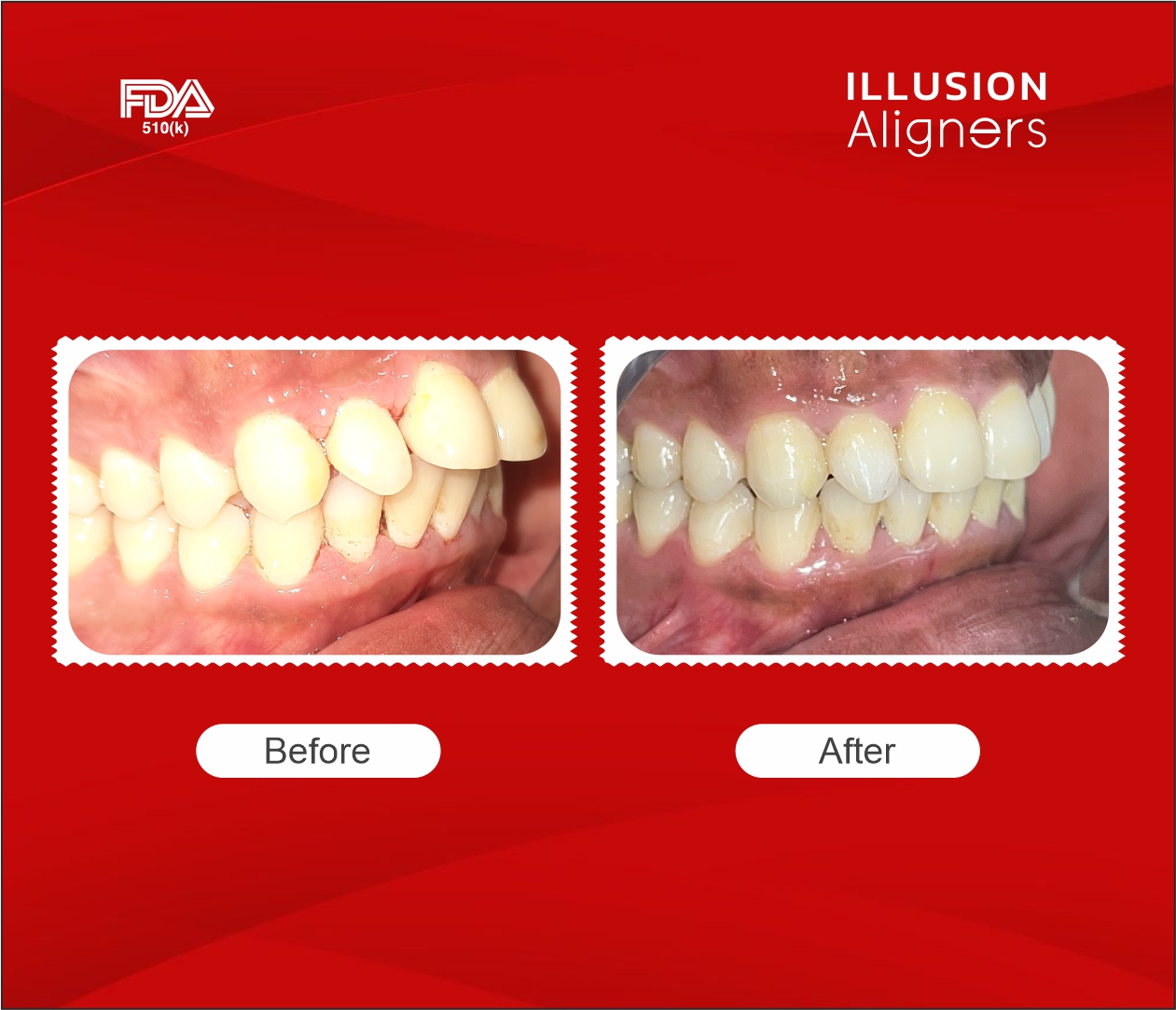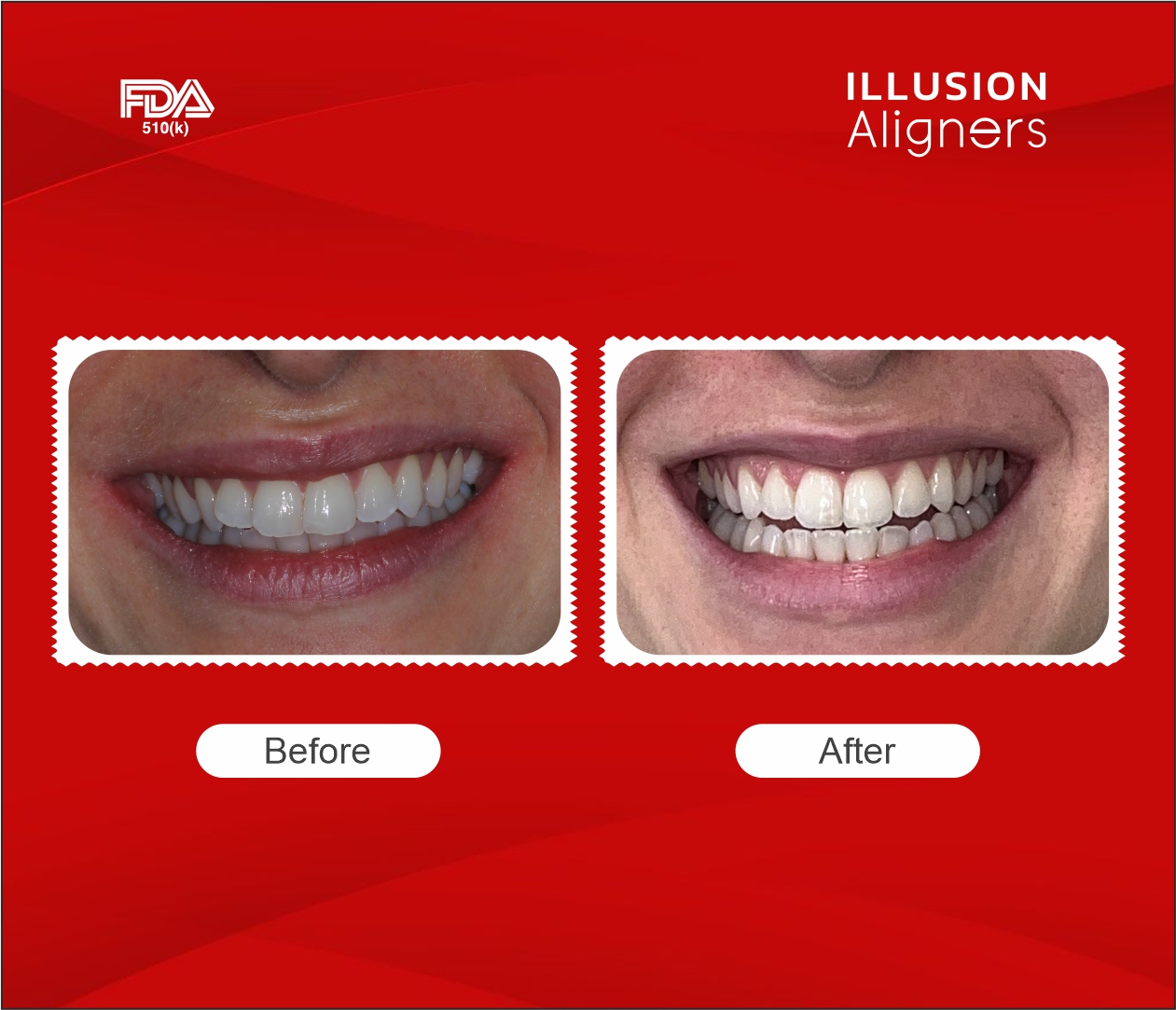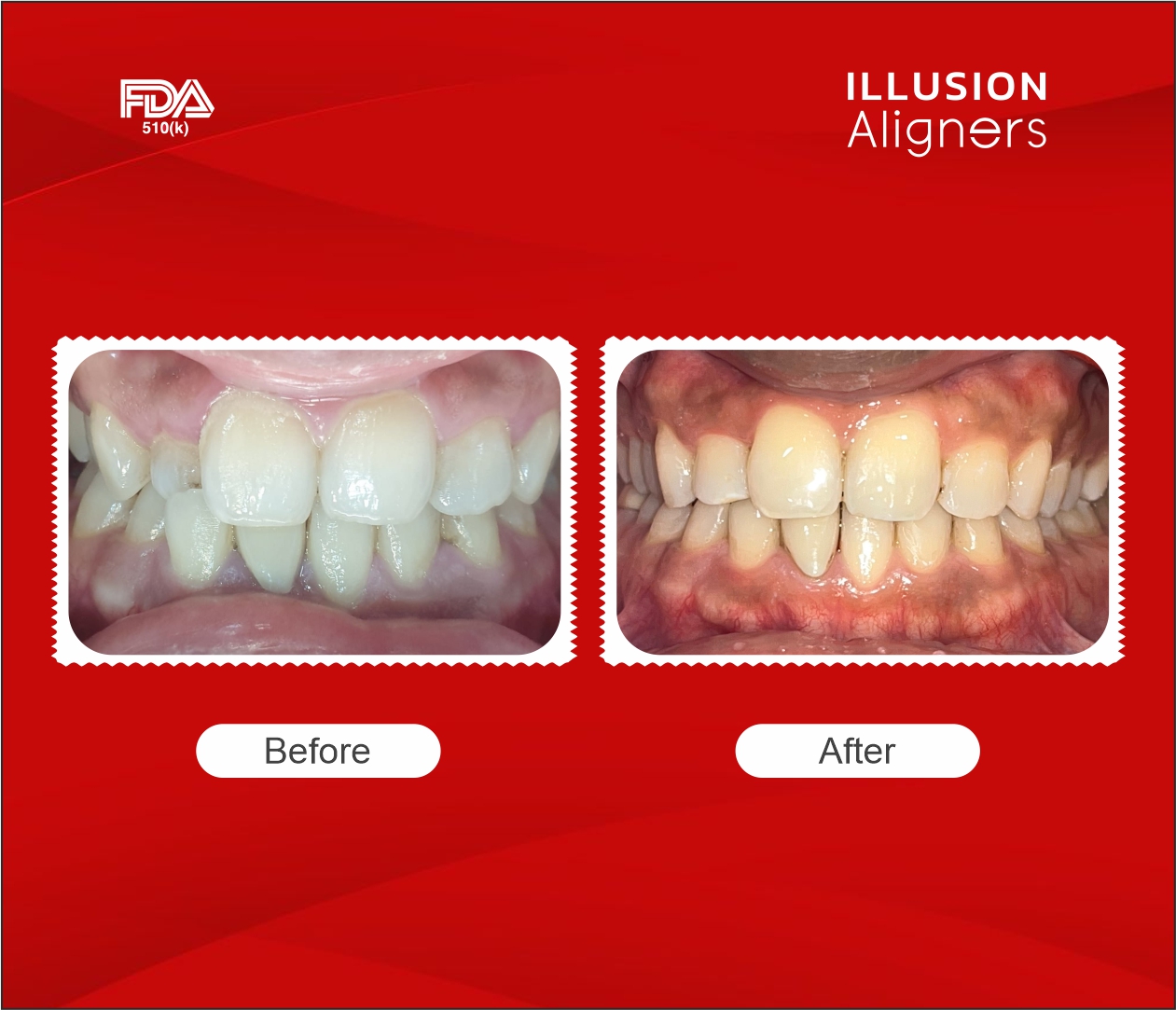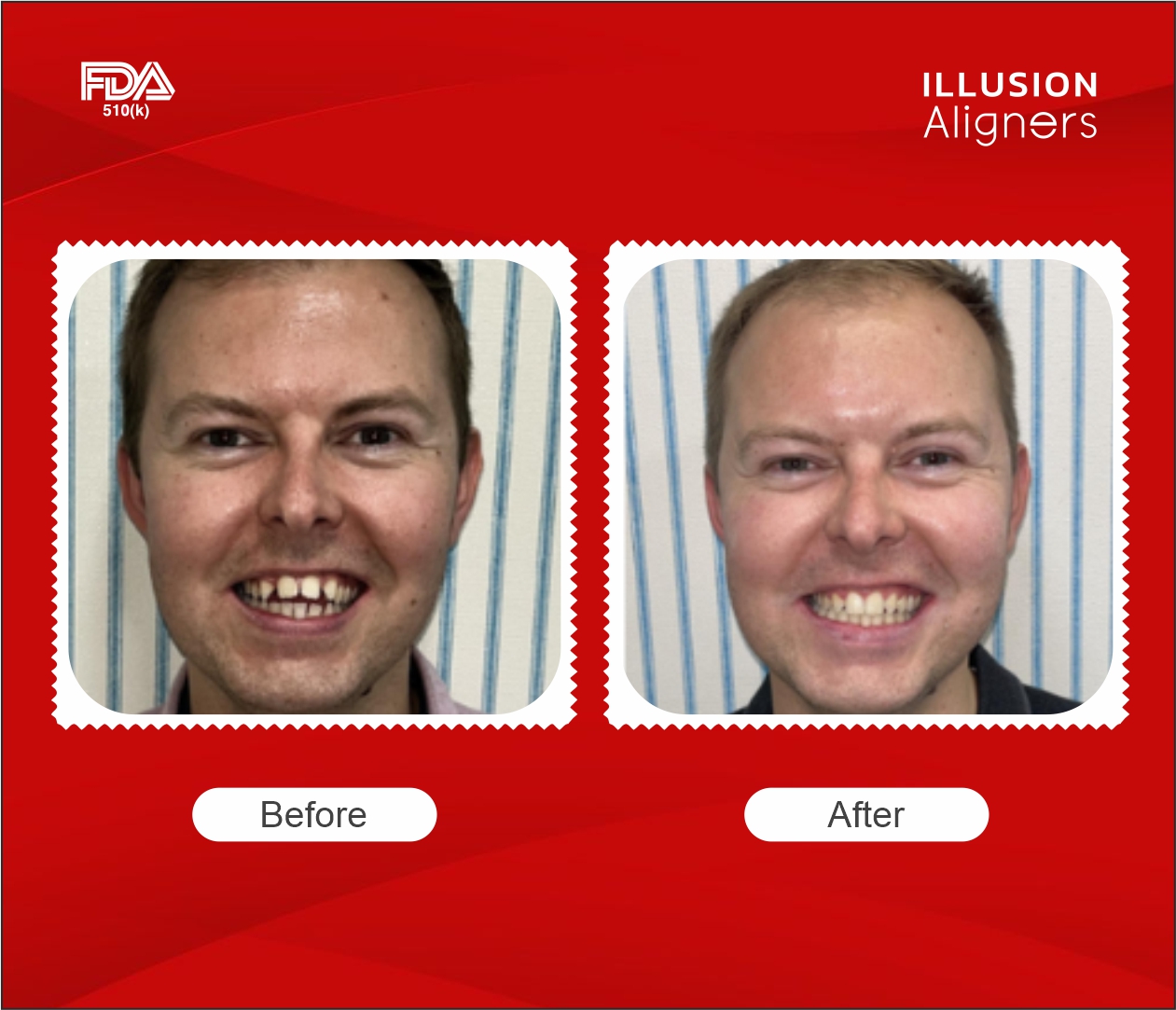
Publish on Jul 30, 2025
Orthodontic Journey to Correct Anterior Open Bite in an Adult Patient
#SuccessStory – Jack (30/ M)
Jack Maloney, 3o years male presented himself in a dental clinic with severe forwardly placed teeth and speech difficulties. He also had gaps in his front teeth, making him too socially conscious.
To treat his case, A series of Illusion Aligners were given to him for 15 months to restore the oral functionality, aesthetic requirements, and lost confidence of the patient.
Let’s take a glance at the pre- and post-treatment look of the patient to know the case in a better way.
INTRODUCTION:
For adult individuals, challenges like anterior open bite, excessive overjet, and spacing due to missing teeth can significantly affect speech, chewing efficiency, and social comfort. This case study follows the orthodontic journey of a 30-year-old male who sought treatment to address visible spacing in his upper teeth, self-consciousness about his smile, and unclear speech. His case presented complex characteristics requiring careful planning, but with the aid of a clear aligner system, the patient experienced a successful and lasting transformation.
ABOUT THE CASE:
Patient presented to the clinic at the age of 30 with primary concerns involving visible gaps in his upper teeth, being overly conscious of his smile in social settings, and difficulty with speech clarity. These concerns were not only esthetic in nature but also functional, indicating underlying malocclusion that required detailed evaluation and a tailored orthodontic approach.
Pre-Treatment:
DIAGNOSIS:
Clinical and radiographic assessment revealed a Class 2 malocclusion accompanied by missing upper lateral incisors. Patient had an anterior open bite measuring 3 mm, and a significantly increased overjet of 10 mm. Additionally, lower anterior crowding was noted, contributing to both esthetic and functional challenges. The combination of anterior open bite with missing lateral incisors presented a case where midline symmetry and anterior guidance needed to be carefully reestablished.

TREATMENT PLANNING:
Objectives:
UPPER ARCH
- Closure of existing spaces in the upper arch
- Reduction of the excessive anterior overjet (10 mm)
- Correction of anterior open bite (3 mm)
- Conversion of canines to lateral incisors to compensate for missing lateral teeth
LOWER ARCH
- Relief of lower anterior crowding
- Coordination with the upper arch to establish proper occlusion
- Establishment of functional anterior guidance
TREATMENT EXECUTION:
The orthodontic correction was executed using ultra clear Illusion Aligners, providing an esthetic and precise approach to tooth movement. A total of 38 aligners were used in the upper arch and 25 in the lower arch. To enhance the results, one refinement phase was carried out, involving an additional 14 aligners for the upper arch and 9 for the lower. Over the course of 15 months, the patient’s smile underwent significant changes. Illusion Aligners facilitated gradual space closure and vertical control, effectively eliminating the anterior open bite. Mid-treatment assessments guided the reshaping of the canines to mimic lateral incisors, which played a crucial role in completing the smile arc and reestablishing anterior guidance. Throughout the process, careful attention was given to aligning both arches for a coordinated and stable occlusion.
REFINEMENT PHASE:
As part of the comprehensive care plan, a refinement phase was incorporated to finalize tooth positions and fine-tune the bite. This stage aimed to enhance the occlusion and further improve the esthetics of the smile. Particular focus was placed on achieving optimal anterior contact and ensuring long-term stability. The refinement also addressed any minor rotations or arch discrepancies that remained after the initial series of aligners, allowing for a precise finish to the treatment.
Post-Treatment
TREATMENT RESULTS:
At the end of 15 months, treatment goals were successfully achieved. The anterior open bite was completely closed, and the overjet was significantly reduced from 10 mm to a functional range. Spaces in the upper arch were closed effectively, and the canines were reshaped to function and appear as lateral incisors, greatly improving smile esthetics. The lower arch alignment was corrected, and coordination between both arches was achieved. Functionally, the patient reported marked improvement in speech clarity and aesthetically, he was pleased with the outcome. The transformation not only improved his dental health but also his self-confidence.

RETENTION PHASE:
To secure the results of treatment, a retention protocol was implemented involving both fixed and removable retainers. Fixed retainers were bonded to the lingual surfaces of both the upper and lower anterior teeth to maintain alignment. In addition, removable Essix retainers were provided for nighttime wear, offering an additional safeguard against relapse. This dual-retention strategy was designed to ensure long-term stability and protect the investment in his smile.
CONCLUSION:
This orthodontic journey illustrates the power of precise planning and modern Illusion Aligner therapy in managing complex malocclusion cases in adults. His case, characterized by anterior open bite, excessive overjet, missing teeth, and crowding, was successfully treated without extractions over a 15-month period. Through space closure, bite correction, and strategic reshaping of teeth, a functional and esthetic result was achieved. With proper retention, patients now enjoy the benefits of a confident, harmonious smile and improved speech—an outcome that reflects the effectiveness of individualized orthodontic care.
